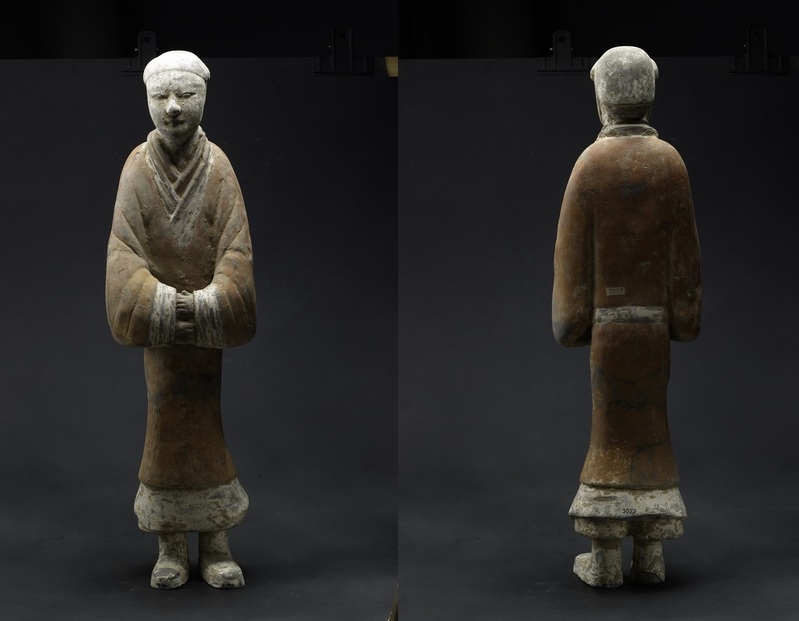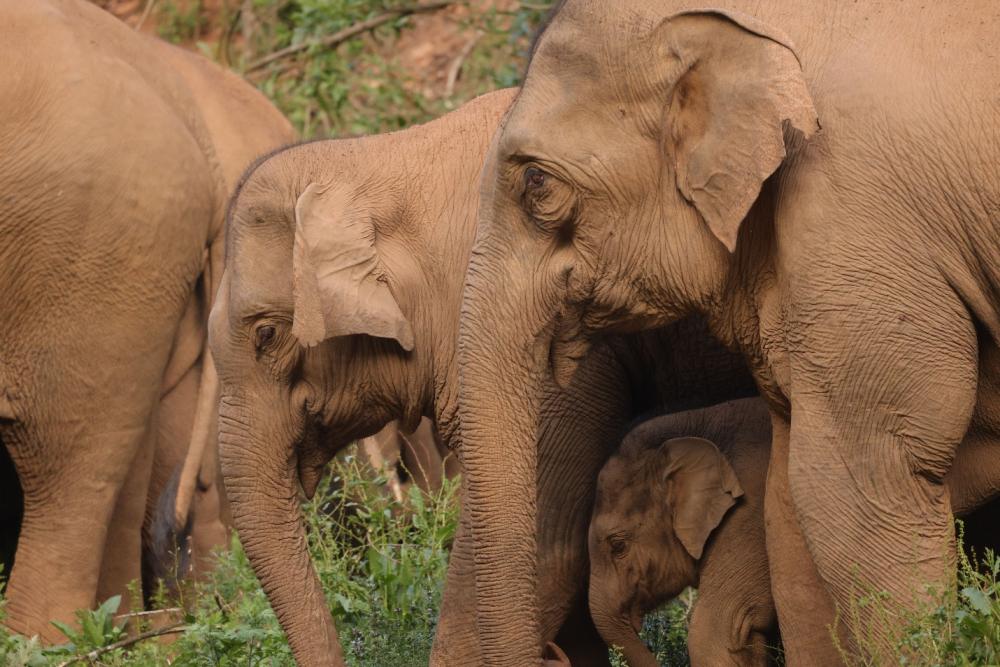2000 years ago, Chinese people loved to eat barbecue? "A Hundred Things to See China" Outbound Exhibition to Enable Foreigners to Understand Ancient China | Cultural Relics | Exhibition
The first exhibition of the "Immortal Jade Armor - Chinese Han Dynasty Cultural Relics Exhibition" in the Shanghai Museum's "100 Objects Looking at China" series of cultural relics and art exports, which opened at the Mora Franz Museum in Hungary on June 24th, showcases the historical picture and living scenes of the Chinese Han Dynasty to overseas audiences through 111 pieces/set of Han Dynasty cultural relics, lacquerware, pottery, bronze ware, seals, stone carvings, coins, portrait stones, and other categories. On the opening day, the museum remained open until 12:00 pm, attracting nearly 10000 visitors to queue up to purchase tickets for a visit. The exquisite cultural relics selected for this first exhibition tell overseas audiences in a simple and understandable way about the economic, cultural, and lifestyle of the Chinese people over 2000 years ago.
The Mi Ying Mai Di Yu voucher held in the Shanghai Museum can be considered the most mysterious cultural relic. This land purchase voucher is made of jade and is the only one discovered so far. Both sides are engraved with inscriptions, meaning that in the year 81 AD, Mi Ying purchased a cemetery and marked the cemetery in all directions and witnesses.
It is reported that buying a land voucher is a burial item placed in the tomb in the form of a land deed in ancient times, which is equivalent to a certificate for buying a cemetery. However, this certificate is used as proof for the underworld and is also a notification document to remind the land deities to avoid interference. The seller and witness in the inscription are both deceased, while the land area and price are virtual. This method originated in the Western Han Dynasty and flourished in the Eastern Han Dynasty.
Purchase land jade coupons and their accompanying text

It is said that the Mi Ying Mai Di Yu Coupon originated from Xinzhou, Shanxi. It was once collected by the famous epigrapher Duan Fang and was recorded in the "Tao Zhai Cang Shi Ji", "Xi Gu Lou Jin Shi Cui Bian", "Hao Li Yi Zhen", "Di Coupon Collection", "Heng Zhai Jin Shi Shi Shi Xiao Lu", and so on. It is reported that there are currently more than ten authentic East Han Dynasty land purchase vouchers unearthed and passed down. The tomb owner Mi Ying was at least a wealthy commoner at that time, but his life, the use of land purchase jade vouchers, and his position in the ritual system at that time still need further discovery and research in the future.
Another jade artifact with four spirit patterns, Yusheng, offers a glimpse into the superb carving techniques and exquisite plastic arts of the Chinese people at that time. This is a white jade hollow carved headdress: the upper end is a Vermilion Bird, and the lower part is a Xuanwu shaped turtle and snake intersecting. On both sides of the pillar are carved green dragons and white tigers, which are symbolic totems in four directions: east, west, north, south, and known as the "Four Spirit Patterns". Before and after the two pillars, there are eight seal characters engraved in yin, which read "Chang Yi Zi Zi, Yan Shou Wan Nian". It is reported that "Sheng" is said to be the iconic headdress of the Queen Mother of the West. During the Han Dynasty, people popular wore "Sheng" to worship the Queen Mother of the West, symbolizing warding off evil and suppressing victory, and pursuing longevity.
The Four Spirit Pattern Jade Sheng and the Text on the Separated Pillar
The Han painted pottery female figurines, which are about 60 centimeters high, show people's fashion at that time. This female figurine, standing with arched hands and solemnly standing, is dressed in a deep robe with a waistband and a cross necked right lapel. The collar is very low, revealing the collar of the inner garment. There are three layers of clothing in total.

It is reported that deep clothing was the most common attire in the Han Dynasty, with a variety of styles connecting the top and bottom, suitable for both nobles and ordinary people, and easy to cut and mature craftsmanship. Although deep clothing was no longer popular after the Wei and Jin dynasties, in the eyes of some researchers, from the long sleeved shirts of the Wei and Jin dynasties to the patchwork clothing of the Ming dynasty, it is regarded as the development and evolution of this type of deep clothing that connects the upper and lower garments. Even modern qipao, contemporary dresses, Japanese kimono, and Korean Hanfu are inspired by the shape of deep clothing.
"Dress" in the Han Dynasty
Another green glazed pottery oven allows people to understand the dietary habits of the people at that time. This oven has a deep belly and a flat bottom, with rectangular ash holes at the bottom, supported by four legs. There are two baking skewers on the stove, each with four cicadas placed on it. This oven was donated by Dutch collector Ni Hank to the Shanghai Museum, and the Shaanxi History Museum houses a cultural relic with almost the same shape and style.
It is reported that in addition to steaming, boiling, frying and other cooking techniques, barbecue was also quite popular during the Han Dynasty. Barbecue scenes often appeared on Han Dynasty portrait stones, such as the "Pao Che" portrait unearthed from the Liangtai Han Tomb in Zhucheng, Shandong, which depicts a chef grilling meat skewers in front of a square oven. In addition to conventional meat grilling, there was also a habit of roasting and eating cicadas during the Han Dynasty. Cao Zhi once wrote in "Cicada Ode" that "he entrusted his body to the butcher and burned it with burning charcoal.".

The Barbecue Stove of the Han Dynasty
In addition, the exhibition also showcases the "work permit" of the Han Dynasty - the copper seal. One of the copper seals has a raised "Pingling" and the text is easily recognizable in clerical script. Pingling is the imperial tomb of Liu Fuling, the youngest son of Emperor Wu of Han Liu Che and Emperor Zhao of Han. It is reported that in ancient times, there was a strict system for casting and issuing seals as identity symbols. The seals themselves were not used to stamp, but rather were presented as proof of identity to indicate ownership.
For example, the bronze seal of the "Wei Cemetery Order" exhibited at the same time is the official seal used by the head of the Wei Cemetery of Emperor Yuan of Han. Although the Wei Mausoleum Commander is in charge of the imperial tomb and has a special identity, his official position and rank are not high, so the official seal used is only decorated with tile buttons.
The other "Maoling Captain Seal" is a stone seal. Maoling is the mausoleum of Emperor Wu of Han, and "Wei" is a military captain. Due to different functions, it can be subdivided into various types, with functions similar to those of today's troops and police. And Maoling Wei should be in charge of Maoling's safety, and the "Maoling Wei Seal" is the official seal used by the officials. However, this seal is made of stone and may be a temporary certificate. However, its printed text is dignified and is regarded by many Chinese seal carving enthusiasts as a classic of Western Han seal writing.

Although it may be a temporary certificate, the four characters "Maoling Wei Yin" are revered as classics by seal carving enthusiasts
The real seal used in the Han Dynasty was usually sealing clay, similar to European lacquer. The "Changling Cheng Yin" seal exhibited this time is the tomb of Emperor Gaozu of Han. "Cheng" is the deputy official of various ancient official offices, and "Changling Cheng" is the deputy official who assists in managing the operation of Changling. This seal is the relic left by Changling Cheng when exercising his powers.
The "Hundred Things to See China" series of cultural relics and arts export exhibitions is the first cultural "going out" brand of Shanghai Museum. Why did you choose Hungary as the first exhibition venue? Chu Xiaobo, the curator of the Shanghai Museum, said that Hungary was one of the first countries to establish diplomatic relations with China and an important partner on the "the Belt and Road", hoping to better promote mutual learning and people's friendship between China and Hungary, as well as between China and Europe.
It is reported that the selection of the Han Dynasty as the theme for this exhibition is because the Silk Road was opened during the Han Dynasty and became an important bridge for economic and cultural exchanges between China and neighboring countries. The Han Dynasty left a profound impression on Chinese culture and even world civilization, becoming a symbol of the continuous development of Chinese civilization for thousands of years.





